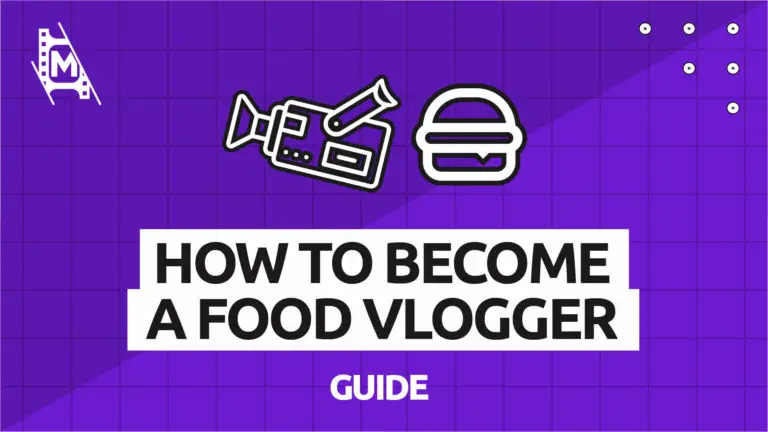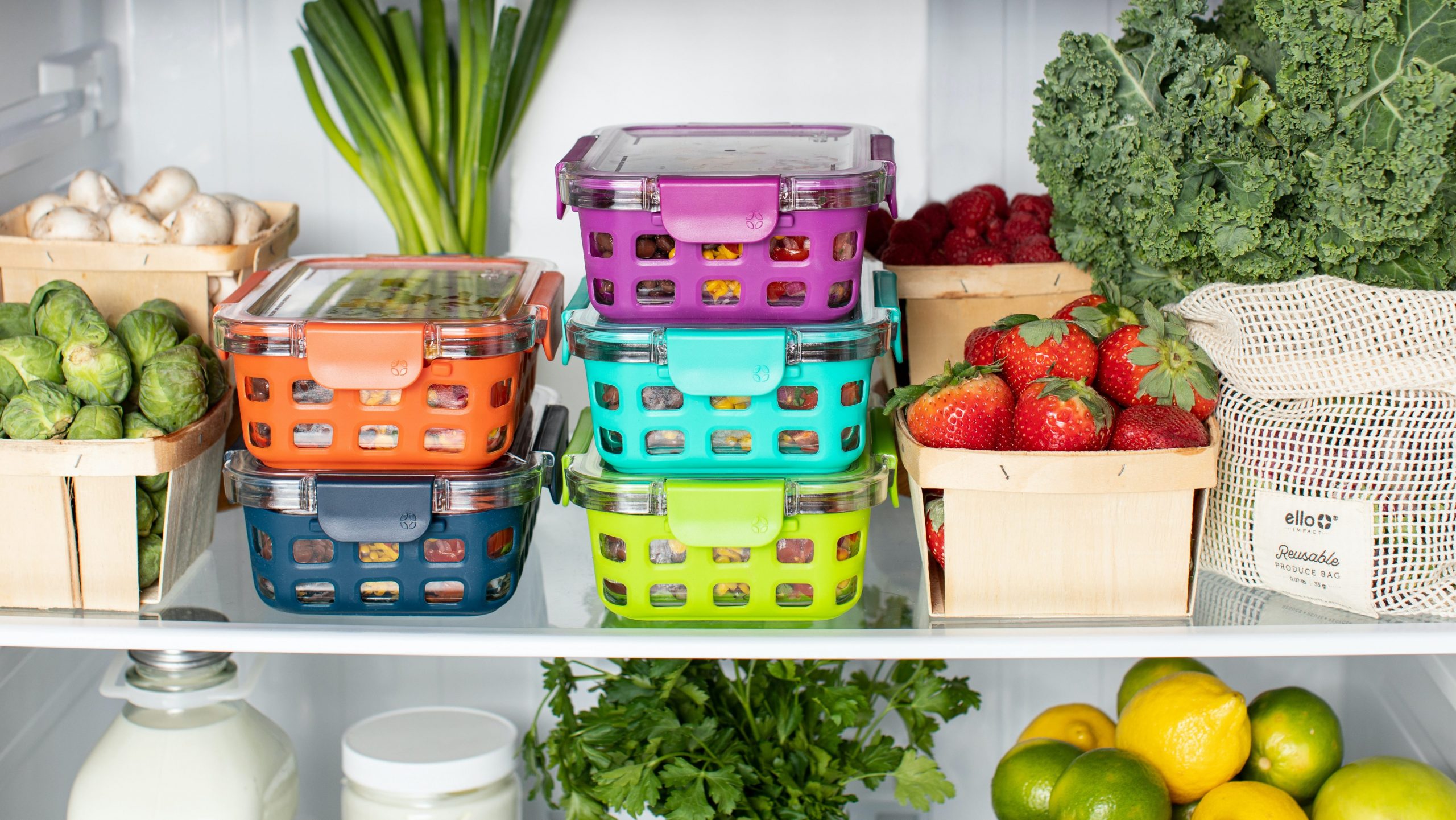You’ve decided that you want to become a food vlogger. Great choice! More than 40% of people watch vlogs regularly. In fact, food vlogs attract some of the largest audiences, and their popularity is only increasing. Whether you’re a professional chef or an avid foodie, you can earn some extra money by starting your own YouTube channel.
But how can you get into this business? How can I create my own vlog? What should I cook in my first video? These questions might be going through your head right now. Well, we’ve got you covered with our new article that provides all the answers above and gives you a clear guide on how to become a food vlogger and grow an audience on YouTube.
How to Start a Food Vlog
Establish Your Brand & Find Your Niche
Before you so much as start filming your first video, you should be thinking about how you’re going to attract an audience.
If you want to become a successful food vlogger, the key is having a loyal viewership. The more viewers you have, the more likely you are to show up on search rankings, land sponsorship deals, earn ad revenue, and more.
You’ll be competing for viewers against millions of other vloggers from around the world, which means that you’ll have to offer your audience something unique and refreshing to catch their attention.
Your brand is just as important as your content when setting yourself apart from the competition. It’s a good idea to define your brand before your start uploading videos to ensure all future posts are on point.
If you have a well-defined brand in mind, it can make it easier for you to target your chosen audience. For instance, if you’re a vegetarian food vlogger, you can stand out by making your content environmentally friendly and targeting eco-conscious viewers.
Your videos should all be on-brand to help set your content apart in its own categories. You’re likely to get more clicks if viewers can recognize your content at a glance, whether it appears on your website, social media page, or YouTube channel.
There are plenty of ways to establish your brand online. You need to know what your audience is looking for and how you plan to fill that niche. Try to stay true to yourself, sticking to what you truly enjoy. It’s much more interesting for viewers to watch someone who’s clearly passionate about the subject matter.
Don’t cast your net too wide, however. Try to focus on a limited range of subjects so that all of your videos are in line with the brand you’ve chosen. This way, your viewers will know what to expect from your channel, and you’ll build a reputation as an experienced expert within your niche.
Get to Know Your Audience
Any vlogger who makes it big should know they owe their success to their fans. Your viewership can make or break your YouTube channel, and so it’s important that you stay connected with your fans and followers.
One of the easiest ways for vloggers to keep their fans engaged is by asking for feedback directly in their videos. They can also post polls, questionnaires, and more to hear back from their audience.
You can also encourage viewers to comment on posts and videos or visit one of your social media pages. Replying to fans’ comments and questions can keep them feeling involved and invested in your brand.
At the end of your videos, don’t forget to include a call to action. Ask your viewers to “like and subscribe” if they enjoyed your video. Doing this can help to boost your subscribership, which in turn improves your visibility.
More viewers also mean more ad revenue for your channel. YouTubers can agree to have ads pop up periodically during their video, and each time a guest sees one, they get a fraction of a cent.
With thousands or even millions of viewers, this can all add up to some serious cash. Some of the most popular cooking channels, such as Binging with Babish, can earn as much as $2.2 million a year.
Start With What You Have
If you want to make quality YouTube content, you need the right equipment to capture crisp, clear videos for your channel. Fortunately, most people can film in 4K straight from their cell phones. Plenty of successful YouTubers shoot their videos on a budget by using their phone instead of dedicated camera equipment.
You can even edit footage straight from your mobile device. There are plenty of both paid and free video editing apps that can help you to add transitions, include special effects, cut and move scenes, and more.
For cooking related vlogs we also recommend getting a tripod as you need to have free hands to cook. If you want to learn more about what equipment to get and vlogging in general, check out our ultimate guide here.
Brainstorm Each Show
You should plan and prepare your content well in advance to give you plenty of time to film, edit, and release quality videos. It’s a good idea to lay out a schedule for yourself to know when you’re releasing each video and what you plan to include.
With a plan in mind, you keep content fresh and consistent. You won’t accidentally bore viewers into leaving by giving them rehashed information.
First, you need to create a rough script for each show, including stage directions and prop information. You may need to go out and get new ingredients or equipment for certain recipes.
It’s a good idea to practice your script in front of the camera or your bathroom mirror to make any necessary tweaks before filming the real deal. It will also help you to memorize your lines and improve the flow of your speech. If you want, you can make notes or cue cards to help you out.
Always make sure to time your practice session to get an idea of how long your video is. In general, you want your posts to be a similar length so that viewers know what to expect. It’s best to keep your videos concise and to the point to keep your audience hooked.
Practice sessions are also the time to test out your recipes to make sure they’re worthy of your brand. You don’t want to have your audience complaining because you gave them bad (or even possibly dangerous) cooking advice.
As a food vlogger, there are many types of videos you can make for your channel. Below are some successful formats, but you can always come up with your own as well.
Video Formats for Food Vloggers
Single Recipe
A single recipe vlog is a type of video that shows how to make one specific dish. You may have seen videos like this on YouTube, where the food vlogger shares their secret family recipes. In some cases, there are variations on which ingredients to use or what type of cooking methods can be used.
Grocery Haul
The concept is simple. Bring the camera along when going grocery shopping. You will need your phone or a camera, shopping bags and a bit of creativity!
Taste Test
Taste tests are common challenges on YouTube, where the food vlogger reviews a food related product. Ever wondered if that new burger joint is worth it? Or maybe you want to try out your own unique recipe at home. Whatever the case, making a taste test video can help grow your channel and even earn you money!
Restaurant Review
Anyone can make a restaurant review video on YouTube. There is no one right approach to making a great restaurant review vlog; every person has their own style and voice which they build an audience around. Remember that a restaurant review video is that it’s not necessarily only about the food: it’s about atmosphere, service and price point as well.
What’s in my Fridge
A video where you have to open up your fridge and show what’s inside of it. These videos can range from anywhere between 5-10 minutes long. It then usually leads to an embarrassing or crazy story about how the contents of your fridge came into being. But it can also be helpful to viewers who want to know what kind of foods they should be eating.
How to Grow a Food Channel on YouTube
Be Consistent Every Time
Viewers prefer YouTube channels that post consistently. They want to know that they can expect a new, high-quality video on time every time. If a vlogger starts missing posts, they may risk losing part of their audience.
Decide on the frequency of video uploads (daily, weekly, monthly) and how long each video will be. Ensure that you have enough content to post consistently and make sure to monitor and respond to fan comments afterward.
Setting a schedule for yourself means that you can film your videos in batches if you want, saving you time and eliminating the possibility of missing posts due to sickness, family obligations, or your day job.
If you decide to film your videos in batches, make sure that you change your clothing and possibly the background in each one. Doing this gives your viewers the illusion that you’re filming each video as you go, making them appear more current.
If possible, try to plan your videos to be a similar length each time. If you have a shorter video you want to post, it’s better to do so as a separate special.
You should also be consistent in the appearance of your video thumbnails. Though this may seem like a minor detail, the thumbnail is the first impression a viewer will have of your video. Your viewers should be able to recognize your brand at a glance.
Learn YouTube SEO
When searching for something using Google, as many as three-quarters of people don’t scroll beyond the first page of results. Your search ranking is crucial if you want to get clicks.
Search Engine Optimization, or SEO, involves using common keywords to improve visibility on Google and other search engines. You can use keywords and phrases in your title, description, and tags for each video. Using the right words may improve your search ranking when people look for terms related to your video.
It’s a good idea to include keywords or phrases close to the beginning of your video title so that it’s the first thing that people see when searching. It can also be good to add brackets or parentheses, as this can add clarification and help titles perform better.
Adding SEO elements to your videos is one of the best ways to grow your audience. With more exposure on search engines such as Google, you’re bound to get more clicks. To learn more about YouTube SEO, check out our guide here.

Network With Other Foodies
It can be tempting to shun the competition, but it’s important to connect with your fellow vloggers when you first start. Teaming up with a well-known name can help you to expand your audience and reach brand new viewers.
You can reach out to other vloggers directly, but don’t always expect an answer from big-name channels. It can help to stay active by subscribing to and commenting on popular vlogs, participating in vlogging forums, joining creator events, and more.
It’s also a good idea to work alongside sponsors if you plan to make a career out of food vlogging. Again, however, approaching companies directly isn’t always the best approach.
The best way to find a sponsor as a food vlogger is by promoting their brand before they start paying you. You can use their products in your videos, give them an unofficial shout-out, or “like” the brand on your social media page.
Once you’ve built up a rapport, you can reach out to a company to see if they’ll pay you to promote their product. Some may offer free goods instead of cash or may let you keep products on the condition that you give them a positive review.
If you become popular enough, brands may approach you first for a sponsorship deal. Most companies will only reach out to vloggers with a large enough following, often hundreds of thousands to even millions of viewers.
Step Outside Your Comfort Zone
Part of becoming a successful food vlogger is finding your niche. Instead of trying to gloss over a huge range of topics, delve into your area of expertise. You can find plenty of specialized food vlogs with huge followings, from baking channels to grilling videos.
Once you’ve found your niche, it can be tempting to settle there and continue grinding out similar videos. However, you may have to get creative to keep your following interested.
You should get outside your comfort zone by posting videos trying out new recipes, ingredients, or cooking styles. Sometimes, it can be good to include setbacks and mistakes in your end video to connect with your viewership on a more personal level.
You can also keep things interesting by taking your cooking outside the kitchen. You might want to visit local eateries, other vloggers, and even professional and test kitchens to give your audience something different to look at while watching.
In Conclusion
If you’ve got a passion for food and a personality made for the screen, you’ve got everything you need to start a successful YouTube channel. As long as you work to create unique content, impress your fans, and set yourself apart from the competition, you can supplement your income or even start a new career as a food vlogger.

